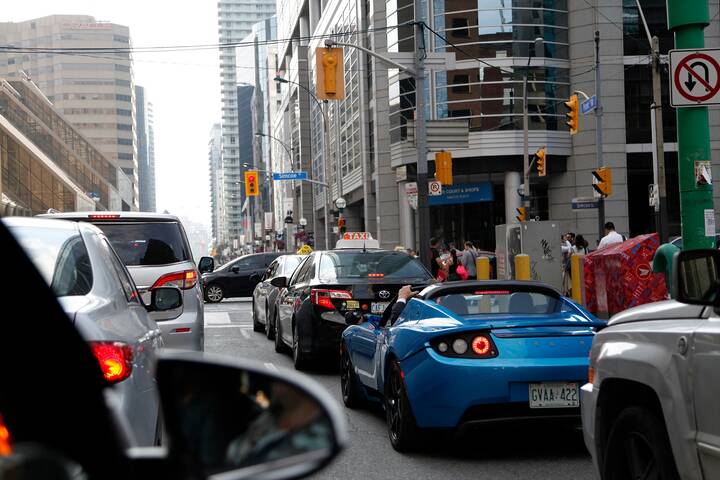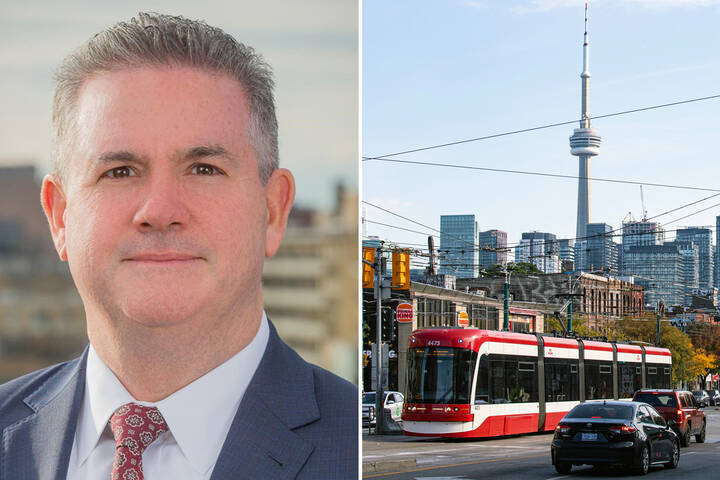
The TTC wants to test out bus platooning with driverless vehicles
The TTC is looking into a number of ways to introduce advanced forms of technology into its system in a effort to improve service and save money, and one of the most interesting proposed methods is called bus platooning.
In a report submitted to the TTC board by Chief Vehicles Officer Bem Case in late October, bus platooning is described as "the linking of two or more buses in a tightly grouped convoy."
Basically, it's a system that would include one bus at the head of a convoy of vehicles being operated by a human driver.
The bus at the head of the platoon would therefore act as the leader, and the buses behind (which would be driverless) would react in real-time to however the driver operates the first vehicle, including steering, accelerating or breaking.
The buses would be "connected through a virtual coupler comprising of sensors, cameras, and wireless tethering," according to the report.
And though this kind of technology is not yet commercially available for surface transit here in Toronto, it is already being used in the transport industry with trucks on public roadways and through platooning of subway trains.
China's ARRT surface transit system also touts platooning their tram-like, bi-articulated vehicles into multiple consists. Glad to see this is now being considered on a North American system to significantly increase capacity on surface bus corridors. Today's technology, people. https://t.co/mMzqkzU3Xe pic.twitter.com/r0C9ljwpuv
— Daryl Dela Cruz 🚡🚇🚍🚲 (@daka_x) October 16, 2020
It is also likely to be available before fully autonomous vehicles, which are not expected to be introduced on the TTC for another five to 10 years, as it requires a lower level of automation but could still have many of the same advantages.
"Platooning has many of the potential benefits, including enhanced safety, lower emissions, improved operational flexibility, and significantly lower capital and operating costs when compared to light rail transit," states the report.
But there are a lot of small benefits that promise to add up in a sizable way from deploying the tech on buses. Fleet flexibility, optics of fuller buses, greater capacity with a single operator, human presence for passenger security, etc.
— Nathaniel Horadam (@NW_Horadam) November 30, 2020
In terms of next steps for bus platooning, the TTC plans to seek out a partnership with a bus manufacturer in 2021 for a demonstration trial that would "advance this transformational technology and signal the TTC's interest in pursuing its development and commercialization."
In addition to bus platooning, the TTC report includes proposals for a Streetcar Operator Safety Assist System and a Driver Safety Assist System to help flag hazardous events and prevent collisions, as well as an Enhanced Turn Warning System to assist in mitigating the 27 per cent of collisions that occur while turning or changing lanes.
The report also proposes a pilot project to finally introduce free wifi on buses, different ways to recondition vehicles to mitigate the risk of COVID-19 and other pathogens, and more.
Hector Vasquez
Latest Videos
Latest Videos
Join the conversation Load comments







